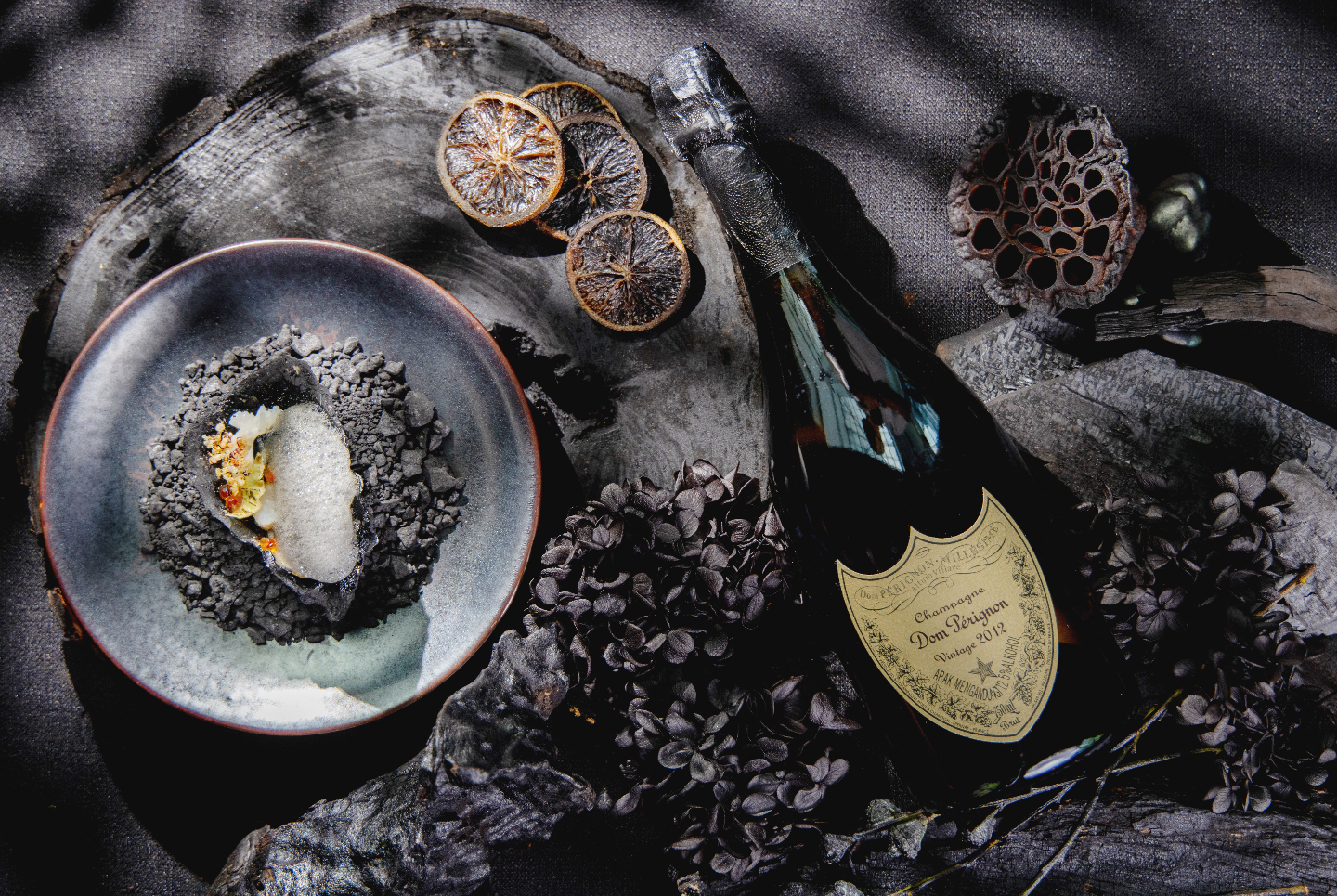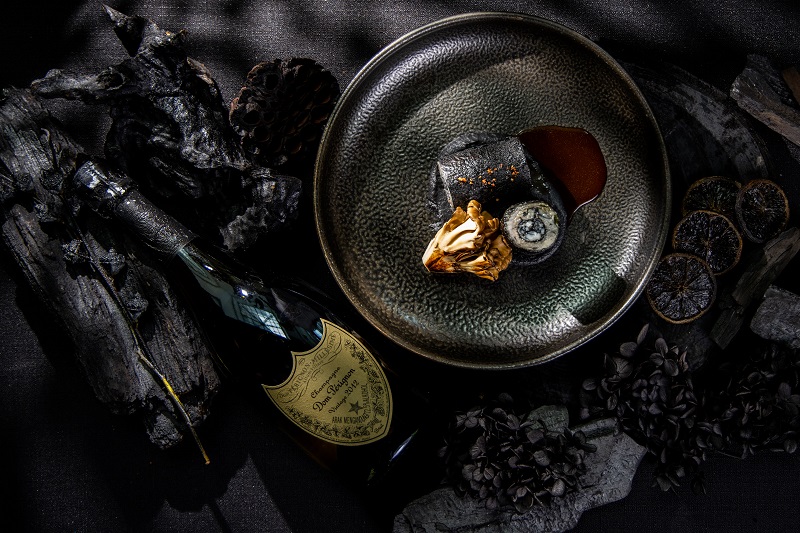
The five-course menu focused on five key factors: intensity, complexity, minerality, tactile and precision (All photos: Dom Pérignon Malaysia)
A recent invitation to a Dom Pérignon wine pairing dinner promised “an explosive Dark Harmony Experience”. At Ilham Tower, Kuala Lumpur, guests clad in black, adhering to the dress code, mingled in the dimly lit event hall. One of the only things catching the light was the champagne in their hands, twinkling and glistening within glass. Tenebrosity cloaked the night with enigmatic mystery, but all was about to be revealed as we took our seats.
A number of elements, including pebbles, charcoal, blueberries, bark, succulents and dried flowers in various shades of black, were laid out on the table before us. One could not help but reach out to interact with the contrasting textures, a concept that ran perfectly in line with the evening’s release: the Dom Pérignon Vintage 2012 Dark Harmony.
How can one achieve harmony without first understanding paradoxes? Contradictions are very much harmony’s building blocks, cohered by synergy. And Dom Pérignon does a fantastic job contriving vintages that perfectly encapsulate and express a year’s multifarious characters.
photo_8.jpg

In 2012, vineyards in France’s Champagne region were afflicted with unpredictable weather changes. The summers blazed with fury and winters froze mercilessly, resulting in yields that vibrated with intense energy.
As each release of Dom Pérignon possesses its own way of attaining and embodying the brand’s spirit, the Vintage 12 fully epitomises its dark side. As if sealing a spell inside a bottle, Dom Pérignon manipulated five key elements — intensity, complexity, minerality, tactile and precision — to engender a dialogue between the wine and its taster. Mysterious, sensual, intense and crystalline, it is a champagne that leaves its master charmed and enchanted.
One must know that this spell has been crafted with extreme care and adroitness. To contain and streamline buzzing energy and contrasting flavours is no easy feat. On the nose, it is full and varied, a mingling of flowers and fruit with a hint of minerality. The bouquet opens with powdery white blooms and nectareous apricot, followed by the freshness of rhubarb and mint, then spicy white pepper. It is enticing and alluring. On the palate, the wine quickly works its magic. A vibrant liquid exploding with effervescence gives way to complex acidic and bitter notes, and finishes with a tautness marked by toasty and gingery accents.
photo_6.jpg

The evening’s dinner was prepared by none other than Chef Raymond Tham of Skillet and Beta KL. Tham impressed with a five-course menu that not only reinforced the expression of “explosive dark harmony”, but also looked the part. The dishes were all-black, using ingredients like charcoal, seaweed and squid ink to give selected components a dark hue. Each course represented one of the facets mentioned earlier.
Starting with Intensity, the appetiser comprising eryngii, Avruga caviar, leek, nutmeg, Espelette pepper and deep-fried filo pastry felt more like an overarching introduction. The play on textures and, again, contrasting flavours, served as an unexpectedly enjoyable dish that touched on all the five points. For Precision, a slab of shima-aji was accompanied by a bright and citrusy yuzu sauce — though no one would have expected it to taste that way, given its dark and muted tone. Prominent and straight to the point, it sent a clear and exact message.
Interluding the dishes were live performances by artist Man Chien and contemporary dancer Wei Jun. The former completed a painting made using her hands, while the latter leaped and twirled to a dance that showcased surrealism and extravagance. The oyster, Lawas rice, endive and black cardamom, crowned with blackened kaffir lime foam, represented Tactile. A personal favourite, the dish also overlapped greatly with Minerality. At this point, it was apparent that the dishes were assimilated with all the facets, but were perhaps named according to their higher aptitude score in a particular one.
photo_12.jpg

Next was Complexity, the Silkie chicken and prawn presented in the form of a roulade and accompanied by squid ink, celeriac and Szechuan pepper jus. Its fragrance was what first captures the attention — quite similar to the way the Vintage 2012 operates, in fact — followed by a visual presentation of textures in the form of the matte black puree, glossy jus and rough surface of the roll. Harmonious is the best adjective to describe the dish, and it went extremely well with the champagne.
Lastly, Minerality was a combination of kombu seaweed, tamarind and lime. Even though it was marked as dessert, the dish leaned towards savoury than sweet, which caught us by surprise. Having said that, it did not perform as well as the preceding dishes.
Through this dining experience, however, one learnt to pay more attention to the palate and pick up notes and expressions a chef or a winemaker has intentionally instilled.
Group bookings may be made in advance at Skillet for those who would like to try the pairing. The menu will be available for private arrangements until September.
Skillet KL, Lot 163, 10 Jalan Perak, Kuala Lumpur. For reservations, call (03) 2181 2426.
This article first appeared on June 6, 2022 in The Edge Malaysia.


